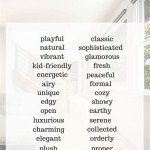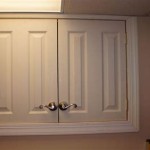Best Quality White Paint for Interior Walls
White paint, a timeless and universally favored choice for interior walls, offers adaptability and aesthetic benefits suitable for a vast range of design preferences. Its neutrality provides a blank canvas, allowing for flexibility in furniture selection, artwork display, and overall room decor. However, navigating the numerous shades and varieties of white paint available can be overwhelming. The "best" white paint is subjective and depends on specific needs, including the desired ambiance, the room's lighting, the existing architectural details, and the anticipated level of wear and tear.
This article aims to provide a comprehensive guide to selecting high-quality white paint for interior walls, considering factors such as undertones, finish, durability, and ease of application. We will explore various options and provide insights to assist in making an informed decision, ensuring a lasting and visually appealing result.
Understanding Undertones
The seemingly simple category of "white" encompasses a spectrum of hues due to underlying pigments, or undertones. These subtle variations significantly impact the overall appearance of the paint, especially under different lighting conditions. Understanding these undertones is crucial for selecting a white that complements the existing elements of a room.
Warm Whites: Warm whites are characterized by yellow, red, or brown undertones. These undertones create a cozy and inviting atmosphere, particularly suitable for rooms with cooler natural light or those intended for relaxation and entertainment. Warm whites can add depth and richness to spaces, making them feel less stark. Examples include shades with names like "Creamy White" or "Antique White." They pair well with natural wood tones and warmer color palettes.
Cool Whites: Cool whites feature blue, green, or gray undertones. These undertones project a clean, crisp, and modern aesthetic, often favored for contemporary designs. Cool whites work well in rooms with abundant natural light or those decorated with cool-toned furnishings. They can create a sense of spaciousness and airiness. Examples include shades like "Cloud White" or "Chalk White." These tend to complement metal accents and minimalist decor.
Neutral Whites: Neutral whites strike a balance between warm and cool undertones. These are often described as "true whites" and are highly versatile, adapting well to various lighting conditions and design styles. They provide a clean and balanced backdrop, allowing other colors in the room to take center stage. While seemingly straightforward, even neutral whites can lean slightly warmer or cooler depending on the specific formulation. They are generally considered safe choices when unsure of the room's specific needs.
The Importance of Testing: Due to the influence of lighting and surrounding colors, it is highly recommended to test paint samples on the walls before committing to a specific shade. Apply a small amount of paint in different areas of the room and observe how it appears under various lighting conditions throughout the day. This process helps to accurately assess the undertones and ensure that the chosen white complements the overall aesthetic.
Selecting the Right Finish
The finish of the paint, also known as the sheen, affects both the appearance and the durability of the painted surface. Different finishes offer varying levels of reflectivity and resistance to wear and tear. The appropriate finish depends on the room's function and the desired aesthetic.
Flat/Matte: Flat or matte finishes have minimal reflectivity, creating a smooth, non-reflective surface. They are excellent at concealing imperfections on walls and providing a sophisticated, understated look. However, flat finishes are less durable and more susceptible to staining and scuffing. They are best suited for low-traffic areas such as bedrooms or formal living rooms.
Eggshell: Eggshell finishes offer a slight sheen, providing a subtle glow while still concealing minor imperfections. They are more durable than flat finishes and easier to clean, making them a versatile choice for various rooms. Eggshell is a popular option for living rooms, dining rooms, and hallways.
Satin: Satin finishes have a higher sheen than eggshell, offering increased durability and washability. They are resistant to stains and scuffs, making them ideal for high-traffic areas such as kitchens, bathrooms, and children's rooms. However, satin finishes can highlight imperfections on walls, so proper surface preparation is essential.
Semi-Gloss: Semi-gloss finishes have a significant sheen, providing a durable and easy-to-clean surface. They are highly resistant to moisture and stains, making them suitable for bathrooms, kitchens, and trim. Semi-gloss finishes are also commonly used on doors and windowsills.
Gloss: Gloss finishes have the highest sheen, creating a highly reflective and durable surface. They are extremely resistant to water and stains but can accentuate imperfections on walls. Gloss finishes are typically reserved for trim, doors, and cabinets, providing a dramatic and easy-to-clean surface.
The selection of the correct finish for specific rooms and applications can greatly extend the life and visual appeal of the paint job. Choosing the incorrect finish can lead to dissatisfaction and quicker degradation of the coating.
Key Considerations for Quality and Durability
Beyond undertones and finish, the quality of the paint itself plays a crucial role in achieving a long-lasting and aesthetically pleasing result. High-quality paints offer superior coverage, durability, and resistance to fading and staining.
Pigment Load: The pigment load refers to the concentration of pigments in the paint. High-quality paints typically have a higher pigment load, resulting in better coverage and color saturation. This means that fewer coats are required to achieve the desired color, saving time and money. Lower-quality paints often have a lower pigment load, requiring multiple coats to achieve adequate coverage. This can also result in a less vibrant and less durable finish.
Resin Quality: The resin acts as the binder that holds the pigments together and adheres the paint to the surface. High-quality paints use durable resins that provide excellent adhesion, flexibility, and resistance to cracking and peeling. Lower-quality paints often use inferior resins that can become brittle over time, leading to premature failure.
VOC Content: Volatile Organic Compounds (VOCs) are chemicals that evaporate from paint as it dries. High levels of VOCs can be harmful to human health and the environment. Low-VOC or zero-VOC paints are available, offering a safer and more environmentally friendly option. While traditionally low-VOC paints were considered inferior, modern formulations offer equivalent or superior performance compared to their high-VOC counterparts.
Washability and Scrubbability: The ability of the paint to withstand repeated washing and scrubbing is essential, especially in high-traffic areas or rooms prone to dirt and stains. High-quality paints are formulated to withstand frequent cleaning without fading or losing their sheen. Check the product specifications for washability and scrubbability ratings to ensure that the paint is suitable for the intended use.
Application Properties: High-quality paints are typically easier to apply, exhibiting good flow and leveling properties. This means that the paint spreads smoothly and evenly, minimizing brushstrokes and roller marks. They also tend to have better sag resistance, preventing the paint from running down vertical surfaces. Consider paints known for their ease of application, especially for DIY projects.
Brand Reputation: While not the sole indicator of quality, established paint brands often have a proven track record of producing high-quality products. Research different brands and read reviews from other users to gain insights into their performance and durability. It is generally advisable to invest in reputable brands known for their commitment to quality and innovation.
Selecting a high-quality white paint involves careful consideration of various factors, including undertones, finish, pigment load, resin quality, VOC content, washability, and application properties. By understanding these factors and testing paint samples, individuals can make informed decisions that result in a lasting and visually appealing interior space. The investment in quality materials and proper application techniques translates to a more durable and aesthetically pleasing outcome, ultimately enhancing the value and enjoyment of the living environment.

9 Design Pros Share Their Favorite Shade Of White Paint Bob Vila

The 12 Best White Paint Colors According To Experts Young House Love

White Paint Decorating With Shades Of

Sherwin Williams Pure White Paint Color Review Stefana Silber

5 Best White Trim Paint Colors Setting For Four Interiors

The 5 Whitest White Paint Colors True Whites

The 12 Best White Paint Colors Interior Designers Swear By

The 12 Best White Paint Colors According To Experts Young House Love

My Top White Paint Colors By Benjamin Moore S B Long Interiors

Best Benjamin Moore Whites Neutral Paint Colors Painted On 12x18 Inch Color Boards I Them For You
Related Posts








